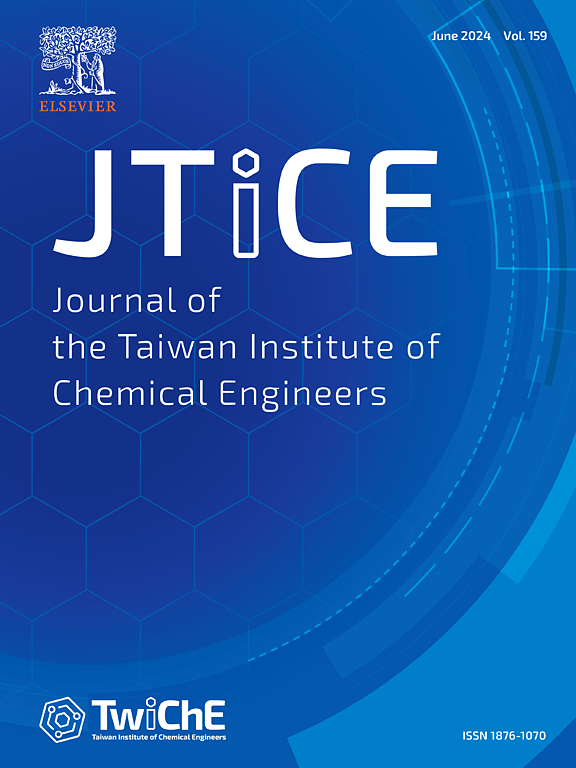Recent progress in ceramic heat exchangers
IF 5.5
3区 工程技术
Q1 ENGINEERING, CHEMICAL
Journal of the Taiwan Institute of Chemical Engineers
Pub Date : 2025-03-25
DOI:10.1016/j.jtice.2025.106082
引用次数: 0
Abstract
Ceramic heat exchangers have emerged as a promising solution for thermal energy recovery in diverse applications, including chemical processing, power generation, and air conditioning systems. Traditional metallic materials, such as copper, stainless steel, and aluminum, often encounter significant limitations in high-temperature and corrosive environments, resulting in decreased efficiency and shorter operational lifespans. This has led to a growing interest in ceramics, which exhibit superior thermal and mechanical properties, making them particularly suitable for demanding conditions.
This review offers a comprehensive analysis of ceramic composite heat exchangers, emphasizing the thermal and mechanical characteristics of various ceramic materials that enable them to endure harsh operational environments. It examines recent advancements in ceramic heat exchanger technology, incorporating insights from experimental, theoretical, and numerical studies. The review highlights progress in advanced ceramic materials, particularly novel composites that enhance thermal conductivity and mechanical strength. It also explores the effects of channel geometry and fluid dynamics on heat transfer performance, alongside innovative manufacturing techniques like additive manufacturing and sintering, which can enhance production consistency and reduce costs.
The findings underscore that ceramics provide significant advantages over metals under extreme conditions, achieving heat transfer efficiencies that markedly exceed those of traditional metal exchangers. Insights from the literature present valuable guidelines for design optimization and efficiency enhancement in ceramic heat exchangers, supporting their wider adoption in industrial applications and contributing to energy savings and improved sustainability in thermal management systems.

陶瓷换热器的最新进展
陶瓷热交换器已经成为一种有前途的解决方案,用于各种应用的热能回收,包括化学加工,发电和空调系统。传统的金属材料,如铜、不锈钢和铝,在高温和腐蚀性环境中经常遇到严重的限制,导致效率下降和使用寿命缩短。这导致了对陶瓷的兴趣日益增长,陶瓷具有优异的热性能和机械性能,使其特别适合苛刻的条件。本文对陶瓷复合热交换器进行了全面的分析,强调了各种陶瓷材料的热学和机械特性,使它们能够承受恶劣的操作环境。它考察了陶瓷热交换器技术的最新进展,结合了实验,理论和数值研究的见解。该综述强调了先进陶瓷材料的进展,特别是提高导热性和机械强度的新型复合材料。它还探讨了通道几何形状和流体动力学对传热性能的影响,以及增材制造和烧结等创新制造技术,这些技术可以提高生产一致性并降低成本。研究结果强调,在极端条件下,陶瓷比金属具有显著的优势,其传热效率明显超过传统的金属换热器。来自文献的见解为陶瓷热交换器的设计优化和效率提高提供了有价值的指导方针,支持其在工业应用中的广泛采用,并有助于节能和提高热管理系统的可持续性。
本文章由计算机程序翻译,如有差异,请以英文原文为准。
求助全文
约1分钟内获得全文
求助全文
来源期刊
CiteScore
9.10
自引率
14.00%
发文量
362
审稿时长
35 days
期刊介绍:
Journal of the Taiwan Institute of Chemical Engineers (formerly known as Journal of the Chinese Institute of Chemical Engineers) publishes original works, from fundamental principles to practical applications, in the broad field of chemical engineering with special focus on three aspects: Chemical and Biomolecular Science and Technology, Energy and Environmental Science and Technology, and Materials Science and Technology. Authors should choose for their manuscript an appropriate aspect section and a few related classifications when submitting to the journal online.

 求助内容:
求助内容: 应助结果提醒方式:
应助结果提醒方式:


